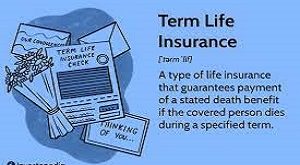Key Features:
1. Lifetime Coverage: Protection for your entire lifetime.
2. Fixed Premiums: Level premiums for the life of the policy.
3. Guaranteed Death Benefit: Tax-free payout to beneficiaries.
4. Cash Value Accumulation: Portion of premiums saved and invested.
5. Dividend Eligibility: Potential for dividend payments.
Types of Whole Life Insurance:
1. Traditional Whole Life: Fixed premiums and death benefit.
2. Variable Whole Life: Investment-linked coverage.
3. Universal Whole Life: Flexible premiums and adjustable coverage.
4. Indexed Whole Life: Ties cash value growth to stock market indices.
Benefits:
1. Lifetime Protection: Coverage for your entire lifetime.
2. Guaranteed Death Benefit: Tax-free payout to beneficiaries.
3. Cash Value Accumulation: Potential for tax-deferred growth.
4. Dividend Payments: Potential for additional income.
5. Estate Planning: Can be used for estate tax planning.
Who Needs Whole Life Insurance?
1. High-Net-Worth Individuals: Estate tax planning.
2. Business Owners: Key person insurance or buy-sell agreements.
3. Families with Special Needs: Lifetime care for loved ones.
4. Those Seeking Guaranteed Income: Supplemental retirement income.
Factors Affecting Premiums:
1. Age
2. Health
3. Lifestyle (smoking, etc.)
4. Occupation
5. Family Medical History
6. Coverage Amount
Average Cost (Monthly Premiums):
1. 25-year-old, non-smoker, $250,000 coverage: $100-$300
2. 35-year-old, non-smoker, $500,000 coverage: $200-$600
3. 45-year-old, non-smoker, $250,000 coverage: $300-$900
Top Whole Life Insurance Companies in the USA:
1. Northwestern Mutual
2. New York Life
3. State Farm
4. MetLife
5. Prudential Life
6. Transamerica
7. Guardian Life
8. Lincoln National
9. USAA (for military personnel and families)
10. Mutual of Omaha
Riders and Add-ons:
1. Waiver of Premium Rider: Waives premiums if disabled.
2. Accidental Death Benefit Rider: Increases payout for accidental death.
3. Critical Illness Rider: Provides lump-sum payment for serious illnesses.
4. Long-Term Care Rider: Covers long-term care expenses.
How to Choose:
1. Assess your needs (estate planning, lifetime income, etc.).
2. Research and compare policies.
3. Consider riders and add-ons.
4. Consult a licensed insurance agent or financial advisor.
Regulations and Resources:
1. National Association of Insurance Commissioners (NAIC)
2. Insurance Information Institute (III)
3. State insurance departments








